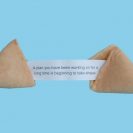Got business problems or challenges at work? With his Two Cents page, Loaay Ahmed shares his expertise in strategic management consulting to help managers, employees and entrepreneurs thrive.
What percentage of our revenue should be spent on marketing? I don’t want to increase cost needlessly.
Since the formation of modern accounting as we all know it, Marketing is an expense. It seems bizarre to me that the most essential element responsible for growth in any organization is looked at financially as an expense rather than an investment. Marketing helps you to focus on whom you want to target and in what order. It makes you think about your communication approach and appeal to prospective buyers and existing clients alike. It helps you develop new products and services and improve current ones. Everything about Marketing eventually contributes directly to generating and/protecting revenue. Yet, many marketers, sadly, don’t treat it as such; and that’s probably why it’s an expense. But if your accountant and auditor don’t think of Marketing as an investment, why can’t you?
Knowing that you have to calculate your ROI (return on investment) makes you by default more careful how you spend your budget. The spend is affected by many factors like how competitive the market is, what stage of the business journey your company is in at the moment, how big or small you are, and so on. And the first question to get you rolling is, “What do we want to achieve?” For example, are you after client acquisitions? Are you aiming for increasing brand awareness? Or are you focused on increasing revenue and referrals from existing clients? When you start with the end in mind you can evaluate whether or not the proposed Marketing budget is justified. Percentages in isolation are meaningless. But before all that, ask yourself: “How can we redesign the current budget and generate better results?”…and that’s just my two cents.
My business partner and I own a restaurant. We’ve been doing great since we started four years ago. I want to change the menu and my partner is afraid of losing our regulars. I believe we will if we don’t renew ourselves. What do you think?
Trends change. One day, people love sushi, then they want tapas; and as soon as whatever new thing comes out, sushi joints and tapas bars become so deserted you might have to call Ghostbusters. Having said that, there are a few restaurants that do what they do consistently well and manage to retain a group of loyal eaters. The key thing here is making sure that you have enough of that segment to keep your business sustainable for years to come. In small and competitive markets it’s easier said than done. You will soon find yourself needing to attract more customers like the ones you already have so you can serve them the same food, but unless you are in a touristic location, you’ll struggle to sustain because existing customers will get bored of eating at your restaurant every night even with a 50% discount.
So how can you bring in new customers and increase the frequency of some of the existing ones? You and your partner are both right. If a menu is working without decline in sales don’t rock the boat. Almost all fast food chains don’t change their entire menus often. They establish comfort and familiarity by consistently delivering the same type and quality (ugh!) of food. You’re also right about exploring new options to attract more business. However, instead of changing the menu play with it. Take the lowest selling dishes out and replace them with new ones on a seasonal basis. You could also offer a sampling plate that includes three to five different small bite-sized new dishes that you would like to introduce later and gather feedback. The key to sustainable growth is balancing consistency with originality…and that’s just my two cents.
For our company’s upcoming biannual progress update meeting, the CEO asked me to present our department’s results and updates in only 15 minutes. How can I do that when there’s a lot to address?
If 15 minutes are not enough you’ll have nightmares if you were part of the School of Arts and Science faculty at the University of Pennsylvania. Twice a year, SAS faculty members share their perspectives on topics ranging from the knowable universe to fractions and fly-fishing in just 60 seconds. That’s 15 presentations against yours. In this page, I answer three different business related questions in two paragraphs for each topic. Each answer has to be clear and to the point. I can’t go to the next page. So I refine my answers several times to achieve this goal. Sometimes my initial answer is three paragraphs long, but it’s amazing how when you revisit what you prepared you can always find ways to make it slimmer without losing meaning. “Less is more” can’t be stressed enough when it comes to presentations.
Pecha Kucha (chitchat in Japanese) is a global presentation style phenomenon where each speaker has 6 minutes and 40 seconds to present 20 slides (20 seconds each). It’s doable. Here’s a crucial tip to help you deliver hit presentations: Your slides are just your mental triggers, not space for your audience to read your presentation. When presenting live, you are the presentation, not the slides. Managers often make the mistake of writing what they want to say for a live presentation on the slides as if it’s handout material. It’s not. One visual, headline, number or graph is enough to attract the audience and to remind you of the point you want to address. If you need more reminders that’s what ‘Presenter’s Notes’ space is for. Follow this method and after editing your slides, edit them again…and that’s just my two cents.
For Loaay Ahmed’s advice on business or work matters, send a short email to loaay@knightscapital.com. Regrettably, only the questions chosen for publishing will be answered.
Loaay Ahmed is a management adviser and strategic expert. To learn more about Loaay and his consulting service, strategic business therapy, visit www.knightscapital.com.










